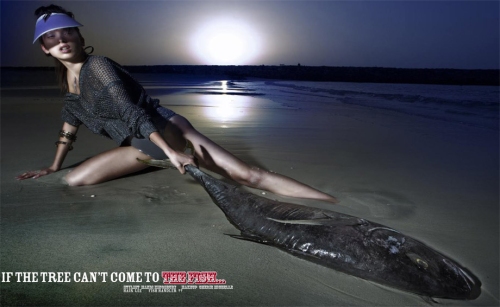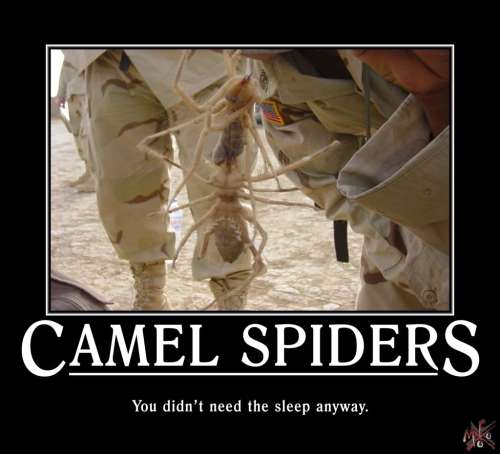This is something I am itching to find out more about, being a bit of a sailor myself.
Secrets of the sea
By Alex Westcott, Sub-Editor/Writer
Published: July 23, 2009, 22:15
The dhow may have modernised in some ways, but the design principles remain the same as they were in the time of the pearl trade.
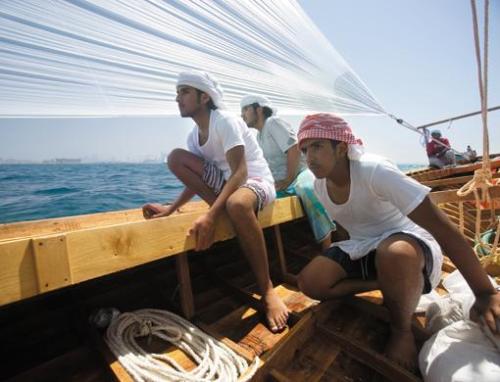
Image Source: http://www.gulfnews.com
It is a sport driven by teamwork. The starting point of the highly competitive dhow race (of which there are two kinds: the al khayour course, a route that features a turn and the al-yoush or al yoush al wahed course, which is a straight course) is decided according to the wind direction of the day, but weather, always volatile, can change at any given moment.
As the dhow glides across the pristine waters of the Gulf coast, it’s easy to become lost in the azure. But the crew remains focused on the task at hand, ensuring that the sail remains taut to produce maximum speed.
The captain remains at the tiller, steering the vessel in the same calculated fashion that he steers his team with a calm directness. He remains constantly aware of the wind’s direction, as this is the deciding factor that can make or break a race.
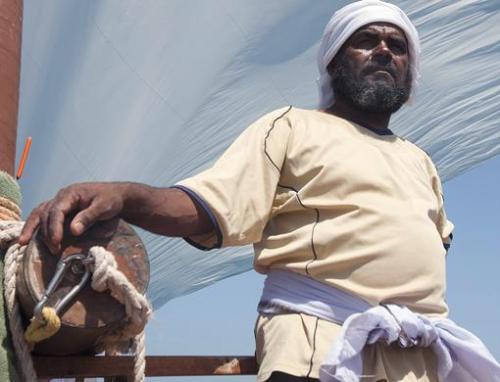
Image Source: http://www.gulfnews.com
It is not as easy for a dhow to turn across the wind the way modern yachts do. As the dhow has no weighted keel, balance is precarious. However, its structure is solid and hardy, and each boat is built to withstand the most gruelling skies and waters.
In order to change direction, the mainsail has to be released from the mast (al-sari or al-duqal), lowered and swung to the other side, an exercise that can take over ten minutes timing which, in a race, is crucial.
On a 43-foot dhow, a crew numbers between eight to 15 people, whereas with a 60-foot dhow, the crew can include anywhere between 15 and 35.
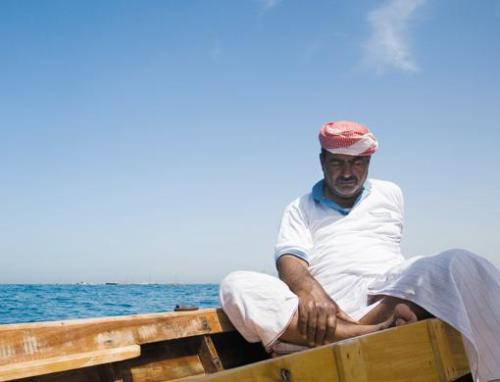
It is a sport all about balance. Traditionally, when dhows were used for the transportation of goods by seafaring merchants in the Gulf, the cargo was stored below the deck.
But this also served another purpose it kept the dhow balanced. Today, around 50 bags filled with sand are used to coordinate direction, adjusted according to the wind conditions.
The crew members will also shift their weight in order to balance the dhow, which is why they will often lean over the sides in order to achieve better balance and to prevent the dhow from capsizing.
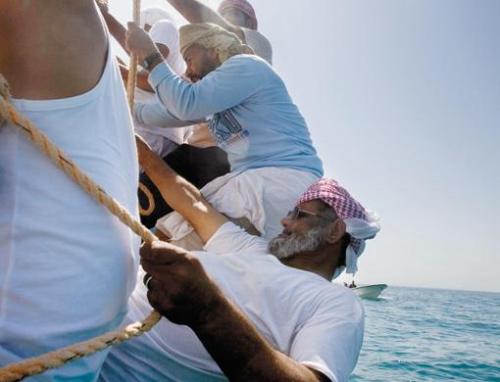
If there is little wind, the captain can elect to dispose of some of the bags to lighten the vessel. But if the wind is stronger, extra bags are needed for greater stability.
The practice of dhow racing dates back centuries. Before arriving in the UAE, dhow racing was going full throttle in Qatar.
The pearl trade between the Gulf and the Far East was facilitated by the sea, and sailing was the quickest means of transport. That was how dhows became part of a livelihood and from this they developed into a sport.
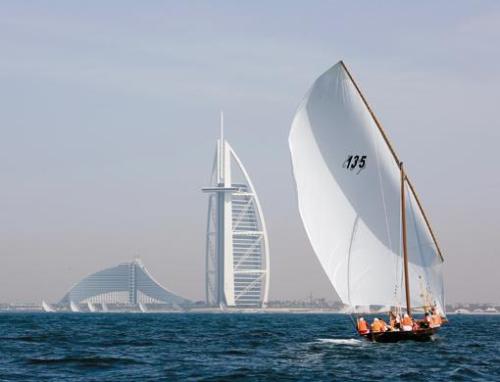
Dubai is one of the busiest dhow ports in the Arabian Gulf, and is a hub for race season. Competitions were initiated in the 1980s.
The race programme is driven at keeping the sailing tradition of the UAE alive. Dhow racing has served as a reminder of the importance of the Emirati’s historic linkages with the sea.
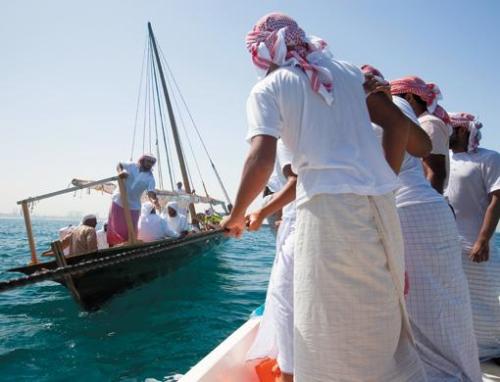
Image Source: http://www.gulfnews.com
As Captain Al Mazroui explains, you also need balance in terms of experience, which is why an average crew comprises men of different ages.
“Each crew member is a link in the process the older, more experienced men guide and teach the younger members and so the cycle continues across the generations,” he says.
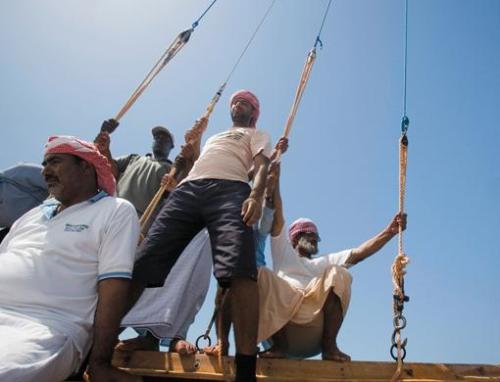
“Being the captain doesn’t make me the best at everything I am the designator and the decision maker. If the wind changes, I am the one who has to make the call on changing the sail. Sometimes of course, the crew members will be dubious, and sometimes I will be wrong, but it’s all part of the sport. One decision pertaining to a change of direction changes everything. As captain I need to know what action to take in the event of change.
“Every captain has his secrets,” smiles the 30-year-old captain. “My father taught me to sail as a young boy, and we now compete against each other. In 2004, I started sailing on my own. We’re both really competitive when we race against each other, but in the end we are still a team because we are family. If I come fourth and he comes first, banter and tongue-in-cheek teasing will always follow! We take everything the other says with a pinch of salt. It’s a sport that strengthens family bonds and builds friendships. It encourages camaraderie with your fellows and that’s more important than the position you come in a race.”

Despite the rapid development that the UAE has undergone in the past decade, the ethos of dhow racing has not changed.
First and foremost, dhow racers are all united by their love of the sea. Like the Emirati traditions of horse breeding, falconry and camel racing, dhow racing “re-enforces UAE tradition and is a reminder of our heritage,” says Al Mazroui.
Sail away
Dhow racing is a practice deeply rooted in Emirati tradition. It’s an age-old ritual of sons learning the ropes at the hands of their fathers.
The wind is not on their side today. The enormous 140-square metre sail al sheraa balloons at the command of the fierce Gulf wind.
It billows gracefully, hanging for a moment in suspension and then whipping down to buffet the young sailors as they try in vain to seize control of the cloth’s unruly dance.
Ropes pass roughly through leathery hands as they form a web around the teakwood vessel the sail, their prey to tame. Yelling above the howling din in Arabic, the young men trot around in swift, startlingly coordinated movements, working in tandem to rein her in the way one would calm a wild horse with patience, passion and a thread of clear communication.
Their captain looks on from a few metres away, content to let them get on with it. Occasionally he chides one of the youngsters or makes a passing suggestion.
They obey diligently, altering their step or relaxing on a tug. The elders lend their weathered arms to the juniors, their years of experience meaning they act almost entirely on instinct. This is the art of dhow racing.
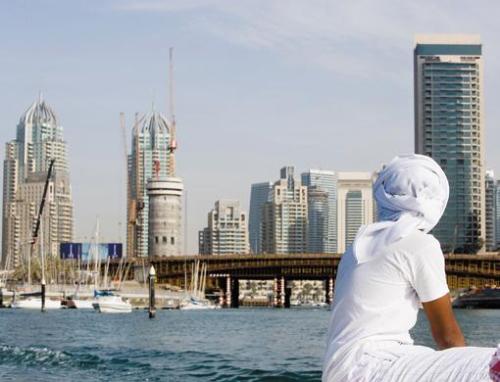
Into the blue
The origin of the word ‘dhow’ remains ambiguous. While some suggest it’s derived from Arabic, other etymologists argue that it could be from the Swahili word for boat.
In the old days, the dhow sail was made of handmade cloth, but today it is made from fabric imported from Europe just one aspect of the modernisation of the craft.
Today’s racing dhow is lighter and therefore faster than its predecessors. Dhows are categorised according to the shape of their hulls, unlike European boats, which are classified according to their sail design.
They are carvel-built, which means that the planks comprising the hull (al haikal or al farmah) are laid flush to one another, rather than overlapping, as is the case with Western boats.
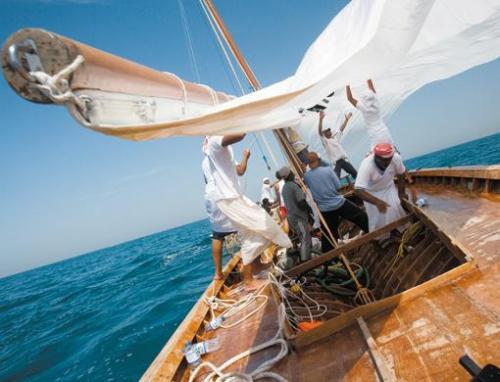
The hull is designed to suit the shallow waters of the Gulf coast. Its flat-bottomed design makes it easy to pull on to the shore.
Timeless tradition
“It’s an invaluable skill,” says Emirati captain Ateeq Mohammad Al Mazroui. “As captain I am the leader of the crew, but no role is of less importance than another. There is of course hierarchy in terms of experience, but at the end of the day, dhow racing is first and foremost about teamwork. It’s a family affair. Chances are if someone sails, his father will have raced, as will his father before him. This is one aspect of dhow racing that hasn’t changed. But everyone has a different mindset, like in any sport. I think priorities have changed and the sport has become more competitive everyone is more driven to win these days,” says Al Mazroui.
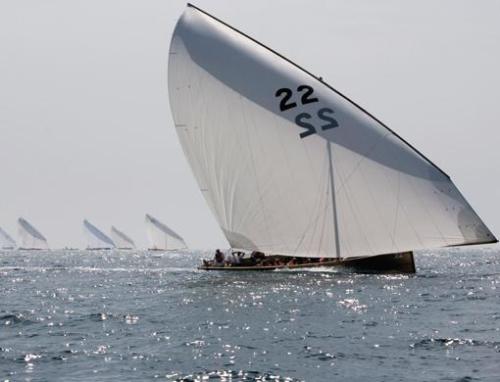
Image Source: http://www.gulfnews.com

